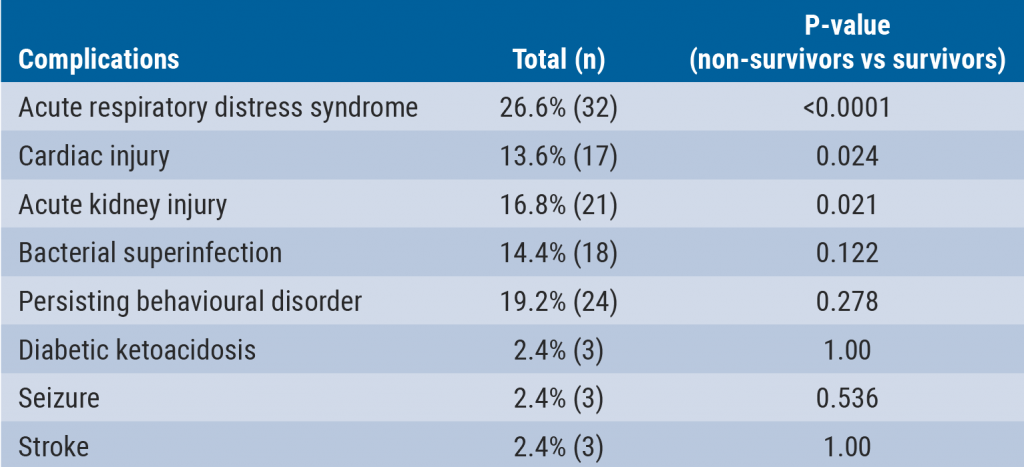GFAP is an intermediate cytoskeletal filament protein of astrocytes and is regarded as a promising non-invasive biomarker for neurodegeneration. It has been shown that GFAP levels are increased in patients with AD compared with healthy controls. Dr Tandis Parvizi (Medical University of Vienna, Austria) examined the utility of GFAP as a biomarker along the AD continuum [1]. In a retrospective, cross-sectional study they included 185 subjects: 44 healthy controls and 141 patients with either subjective cognitive decline (SCD, n=18), mild cognitive impairment (MCI, n=63), or AD (n=60). Concentrations of GFAP in plasma and CSF were quantified using ultrasensitive single-molecule array (SIMOA).
The results showed a gradual increase of GFAP, with the lowest concentration in healthy controls and the highest in AD. The median concentration of GFAP in plasma was:
- healthy controls: 79 pg/mL (53.7–120.6);
- SCD: 111 pg/mL (71.0–154.0);
- MCI: 167.5 pg/mL (93.9–256.3);
- AD: 181.9 pg/mL (129.6–269.6).
Diagnostic discrimination between controls, MCI, and AD groups was good (P<0.001). Analysis of GFAP in plasma could further distinguish between groups with SCD and AD (P=0.01). To establish the value of these biomarkers for clinical diagnosis, the researchers constructed a diagnostic panel combining GFAP and neurofilament light chain (NfL) with well-known risk factors (age, sex, ApoE4 genotype). Results for distinguishing people with AD from healthy controls were promising, with an area under the curve (AUC) of 0.92. The AUC for distinguishing people with MCI and healthy controls was 0.82.
- Parvizi T, et al. Promising diagnostic accuracy of Plasma GFAP within the AD continuum. OPR-121, EAN 2021 Virtual Congress, 19–22 June.
Copyright ©2021 Medicom Medical Publishers
Posted on
Previous Article
« 24-month pooled FIREFISH data of risdiplam in SMA Next Article
Good safety and efficacy of cenobamate for focal seizures »
« 24-month pooled FIREFISH data of risdiplam in SMA Next Article
Good safety and efficacy of cenobamate for focal seizures »
Table of Contents: EAN 2021
Featured articles
Letter from the Editor
COVID-19
First evidence of brainstem involvement in COVID-19
Cognitive/behavioural alterations persistent after COVID-19
Neural base of persistent hyposmia after COVID-19
Neurological symptoms and complications of COVID-19 affect outcomes
Cerebrovascular Disease
Intracerebral haemorrhage only slightly increases mortality in COVID-19 patients
Stroke with covert brain infarction indicates high vascular risk
Expanding precision medicine to stroke care
Dexamethasone not indicated for chronic subdural haematoma
Cognitive Impairment and Dementia
Severe outcomes of COVID-19 in patients with dementia
Promising diagnostic accuracy of plasma GFAP
Sex modulates effect of cognitive reserve on subjective cognitive decline
Hypersensitivity to uncertainty in subjective cognitive decline
Epilepsy
Minimally invasive device to detect focal seizure activity
‘Mozart effect’ in epilepsy: why Mozart tops Haydn
Migraine and Headache
Factors associated with decreased migraine attack risk
Pregnant migraine patients at higher risk of complications
Occipital nerve stimulation in drug-resistant cluster headache
Rhythmicity in primary headache disorders
Multiple Sclerosis and NMOSD
Typing behaviour to remotely monitor clinical MS status
Alemtuzumab in treatment-naïve patients with aggressive MS
No higher early MS relapse frequency after stopping ponesimod
Good long-term safety and efficacy of inebilizumab in NMOSD
Neuromuscular Disorders
Inability to recognise disgust as first cognitive symptom of ALS
Pathogenic T-cell signature identified in myasthenia gravis
Parkinson’s Disease
Levodopa-carbidopa intestinal gel in patients with advanced PD
New Frontier – Navigated Transcranial Ultrasound
Exploring the possibilities
Related Articles

August 18, 2021
Good safety and efficacy of cenobamate for focal seizures
August 18, 2021
Long-term effectiveness of ANT-DBS in epilepsy confirmed

August 18, 2021
Severe outcomes of COVID-19 in patients with dementia
© 2024 Medicom Medical Publishers. All rights reserved. Terms and Conditions | Privacy Policy

